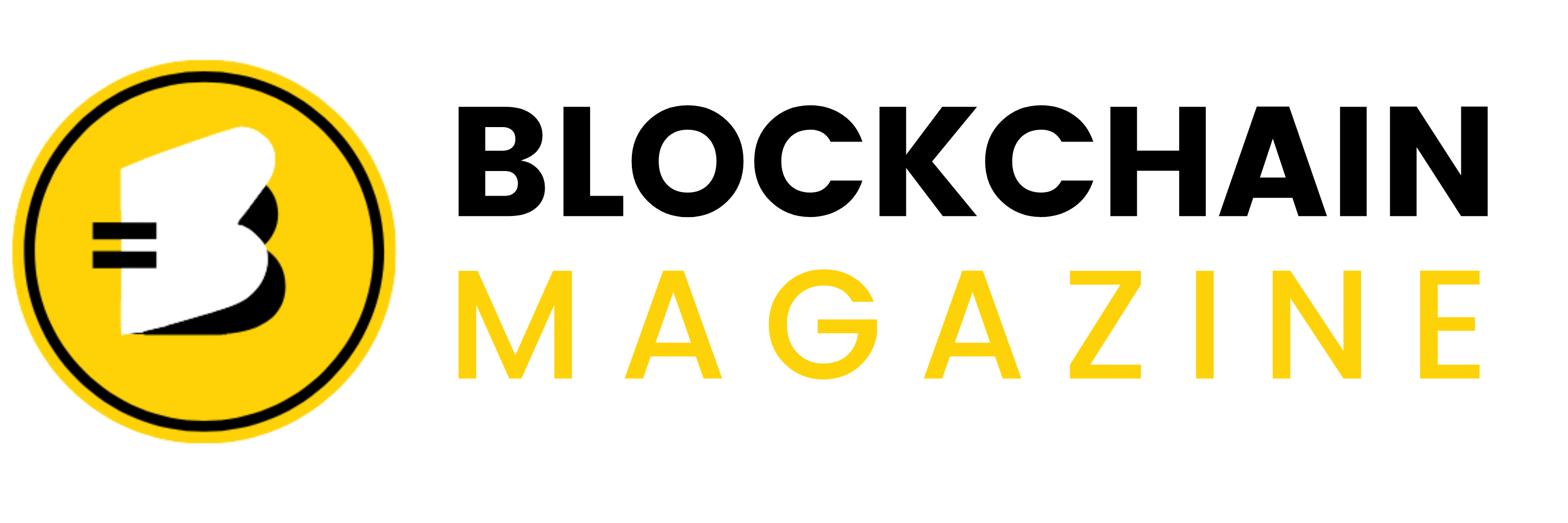Blockchain 101: The Ultimate Beginner’s Guide to Crypto & DeFi
So, you’ve heard about blockchain and crypto, right? It’s like the buzzword of the decade. Everyone’s talking about it, but not everyone really gets it. That’s cool, though. We’re here to break it down in a way that won’t make your head spin. Think of it as your go-to guide to understanding the basics of blockchain, cryptocurrencies, and this whole DeFi thing. Whether you’re just curious or thinking about diving in, this guide will help you get a grip on what’s what. Let’s get started with Blockchain 101.
Key Takeaways
- Blockchain is the backbone of cryptocurrencies, powering digital coins like Bitcoin and Ethereum.
- Cryptocurrencies operate on decentralized networks, meaning no single entity controls them.
- DeFi, or Decentralized Finance, offers financial services without traditional banks or middlemen.
- Smart contracts are automated agreements that execute when certain conditions are met, all thanks to blockchain.
- The future of blockchain and DeFi is full of potential but also faces challenges like security and regulation.
Understanding Blockchain Technology
What is Blockchain?
Blockchain is like a digital ledger that keeps track of transactions across multiple computers. What makes it special is its decentralized nature, meaning no single entity has control over the entire network. Each block in the blockchain contains a list of transactions, and once a block is added, it’s nearly impossible to change. This ensures that the data is secure and transparent.
How Blockchain Works
Here’s a simple breakdown of how blockchain operates:
- Transaction Initiation: A user requests a transaction, which is then represented as a block.
- Verification: The network of computers, known as nodes, verify the transaction using algorithms.
- Block Addition: Once verified, the block is added to the chain, which is immutable and transparent.
- Completion: The transaction is complete, and the update is distributed across the network.
This process ensures that blockchain remains a reliable and secure way to record transactions.
Key Features of Blockchain
Blockchain technology comes with several key features that set it apart:
- Decentralization: No central authority controls the blockchain, making it resistant to censorship and tampering.
- Transparency: Every transaction is recorded on the blockchain, and anyone can view it, ensuring accountability.
- Security: Advanced cryptographic techniques secure the data, making it nearly impossible to alter once recorded.
Blockchain isn’t just about cryptocurrencies; its potential applications are vast, ranging from supply chain management to secure voting systems.
Understanding these features is crucial for anyone looking to explore the world of blockchain and its numerous applications.
Exploring Cryptocurrencies
Introduction to Cryptocurrencies
Cryptocurrencies are digital or virtual currencies that use cryptography for security. This makes them hard to counterfeit. Unlike traditional currencies, which are issued by central banks, cryptocurrencies are decentralized and operate on technology called blockchain. This means they are maintained by a network of computers, ensuring transparency and security.
Popular Cryptocurrencies
Several cryptocurrencies have gained popularity due to their unique features and widespread adoption:
- Bitcoin (BTC): Often referred to as digital gold, Bitcoin was the first cryptocurrency and remains the most valuable by market cap.
- Ethereum (ETH): Known for its smart contract functionality, Ethereum supports a wide range of decentralized applications (dApps).
- Ripple (XRP): Designed for fast and low-cost international payments, Ripple is popular among financial institutions.
Cryptocurrencies are more than just a trend; they’re reshaping how we think about money and transactions.
How Cryptocurrencies are Created
Creating cryptocurrencies involves several methods:
- Mining: This is like solving complex puzzles with computers. Miners compete to add new blocks to the blockchain and get rewarded with cryptocurrency.
- Proof of Stake (PoS): Users lock up some of their coins to support network operations. They earn rewards by being selected to validate new blocks.
- Forking: This involves taking an existing blockchain and modifying it to create a new cryptocurrency. It’s like renovating an old house to make it your own.
Cryptocurrencies offer a new way to think about money, investment, and financial transactions. As they continue to evolve, their impact on the global economy will likely grow. For more in-depth insights, check out the leading source for news and analysis on cryptocurrency.
Diving into Decentralized Finance (DeFi)
Decentralized Finance, or DeFi, is like a breath of fresh air in the financial world. It’s a system where financial products are available on a public blockchain network, making them open to anyone to use. Unlike traditional banks, DeFi doesn’t rely on any intermediaries or centralized institutions. Instead, it uses smart contracts on blockchains like Ethereum to handle transactions. Imagine a world where you can borrow, lend, or trade assets without needing a bank. That’s DeFi for you.
DeFi vs Traditional Finance
When you compare DeFi to traditional finance, the differences are pretty stark. In the traditional system, banks and institutions control everything. They decide who gets a loan, how much you pay in fees, and how your money is managed. DeFi flips that script. Here, smart contracts manage the transactions, and everything is transparent. You can see the code, understand how things work, and know exactly what you’re getting into. Plus, DeFi is global from the get-go. As long as you have an internet connection, you can access DeFi services.
Popular DeFi Protocols
The DeFi space is buzzing with innovative protocols that offer a variety of financial services. Here are a few that stand out:
- AAVE: A popular lending protocol where users can earn interest on deposits and borrow assets.
- Maker: Known for its stablecoin, DAI, Maker allows users to lock in collateral and generate DAI.
- Uniswap: A decentralized exchange that enables users to swap tokens directly without an intermediary.
These protocols show just how diverse and dynamic the DeFi landscape is, offering everything from lending to trading, and even creating stablecoins. As DeFi continues to grow, it’s paving the way for a more inclusive and accessible financial future.
The Role of Smart Contracts
Understanding Smart Contracts
Smart contracts are like digital agreements that automatically execute when certain conditions are met. Think of them as the “If This Then That” logic on steroids. They’re not just a piece of paper or a handshake; they’re lines of code on the blockchain. What makes them special is that they don’t need a middleman. Once they’re set up, they run on their own, making sure that the terms are followed to the letter.
Applications of Smart Contracts
These smart contracts are used in all sorts of areas. In real estate, they can handle transactions without needing a lawyer or a bank. In healthcare, they can manage patient records securely and privately. In crowdfunding, they make sure funds are released only when the project hits its goals. The possibilities are almost endless, and as more industries catch on, we’ll see even more innovative uses.
Security in Smart Contracts
Now, security is a big deal when it comes to smart contracts. Since they’re on the blockchain, they’re pretty secure, but they’re not foolproof. Bugs in the code can lead to vulnerabilities, and once they’re on the blockchain, they can’t be changed. That’s why it’s crucial to get the code right from the start. Developers often use audits and tests to catch any issues before the contracts go live. It’s all about making sure that once they’re out there, they’re as solid as a rock.
Cryptography in Blockchain
Cryptography is the backbone of blockchain technology, providing the security and privacy that make blockchain trustworthy. Let’s break down the essentials of cryptography in the blockchain realm.
Basics of Cryptography
Cryptography is all about securing information. In the context of blockchain, it’s used to secure transactions and control the creation of new units. The primary goal is to ensure that only authorized parties can access and alter the data.
Public and Private Keys
In blockchain, public and private keys are used to manage ownership of cryptocurrencies. The public key acts as an address that others can use to send you crypto, while the private key is your secret password that allows you to access and manage your funds. Losing your private key means losing access to your assets, so it’s crucial to keep it safe.
Hashing and Encryption
Hashing transforms data into a fixed-size string of characters, which is unique to the original data. It’s a one-way function, meaning you can’t reverse it to find the original input. This is used to ensure data integrity in blockchain. Encryption, on the other hand, is a two-way function that allows data to be encoded and decoded with a key, ensuring that only authorized users can access the information.
Cryptography isn’t just about keeping secrets; it’s about building trust in a digital world where trust is hard to come by.
The Future of Blockchain and DeFi
The blockchain world is buzzing with new trends that are set to change how we interact with technology and finance. One of the most exciting developments is the integration of artificial intelligence (AI) with blockchain systems. This fusion is expected to enhance the efficiency and security of blockchain networks, bringing about more robust and intelligent solutions. AI-driven blockchain applications are likely to become mainstream, offering predictive analytics and automated decision-making processes.
Another trend to watch is the rise of interoperability between different blockchain networks. As more blockchains are developed, the ability for them to communicate and work together seamlessly becomes crucial. This will lead to more cohesive ecosystems where assets and data can move freely across platforms, reducing friction and enhancing user experience.
While the future looks bright, there are hurdles to overcome. Scalability remains a significant issue. As more users and applications join the blockchain, the networks can become congested, leading to slower transaction times and higher costs. Developers are actively working on solutions like sharding and layer-2 protocols to tackle this problem.
Security is another concern. As blockchain technology becomes more widespread, it becomes a bigger target for cyberattacks. Ensuring that systems are secure and resilient against threats is paramount. Ongoing research and development in cryptographic techniques are essential to safeguarding blockchain networks.
Blockchain and DeFi are poised to make a substantial impact on global finance. By removing intermediaries, DeFi enables individuals to have more control over their financial activities. This shift can democratize finance, making it more accessible to people worldwide.
Moreover, the transparency and efficiency of blockchain can lead to more trust in financial systems. Transactions are recorded on an immutable ledger, reducing the chances of fraud and mismanagement. As the fintech and blockchain sectors continue to evolve, these technologies will likely reshape the landscape of global finance, offering new opportunities and challenges for businesses and consumers alike.
“The future of finance is not just digital; it’s decentralized. As blockchain and DeFi technologies mature, they promise to create a financial ecosystem that is more inclusive, transparent, and efficient.”
Conclusion
So, there you have it, folks. We’ve taken a stroll through the world of blockchain and crypto, and hopefully, things are a bit clearer now. It’s a wild ride, no doubt about it. From Bitcoin to DeFi, there’s a lot to digest, but that’s what makes it exciting. Remember, it’s not just about making a quick buck. It’s about understanding how this technology can change the way we think about money and finance. Whether you’re just curious or ready to dive in, keep learning and stay informed. The crypto world is always changing, and who knows what tomorrow will bring? So, keep your eyes open and your mind curious. Happy exploring!
Frequently Asked Questions
What exactly is blockchain?
Blockchain is like a digital notebook that records information in blocks. These blocks are linked together in a chain, making it super hard to change any information once it’s added.
How do cryptocurrencies work?
Cryptocurrencies are digital money that you can use to buy things or trade. They use special technology called blockchain to keep everything secure and transparent.
What is DeFi?
DeFi, or Decentralized Finance, is a new way of handling money without banks. It uses blockchain to let people lend, borrow, and trade directly with each other.
Why are smart contracts important?
Smart contracts are like computer programs that automatically do things when certain conditions are met. They help make transactions faster and safer without needing a middleman.
How is cryptography used in blockchain?
Cryptography is like a secret code that keeps data safe. In blockchain, it ensures that only the right people can access information, keeping everything secure.
What does the future hold for blockchain and DeFi?
Blockchain and DeFi are expected to grow and change how we use money and data. They might make finance more accessible and fair for everyone.
Stay informed with daily updates from Blockchain Magazine on Google News. Click here to follow us and mark as favorite: [Blockchain Magazine on Google News].
editor's pick
Get Blockchain Insights In Inbox
Stay ahead of the curve with expert analysis and market updates.
latest from tech
Disclaimer: Any post shared by a third-party agency are sponsored and Blockchain Magazine has no views on any such posts. The views and opinions expressed in this post are those of the clients and do not necessarily reflect the official policy or position of Blockchain Magazine. The information provided in this post is for informational purposes only and should not be considered as financial, investment, or professional advice. Blockchain Magazine does not endorse or promote any specific products, services, or companies mentioned in this posts. Readers are encouraged to conduct their own research and consult with a qualified professional before making any financial decisions. The featured image used is just a creative depiction of the title and it does not intend to hurt sentiments of any person or institution. If it hurts anyone sentiments, please do not hesitate to reach out to Blockchain Magazine.

 Bitcoin
Bitcoin  Ethereum
Ethereum  XRP
XRP  Tether
Tether  Solana
Solana  USDC
USDC  Dogecoin
Dogecoin  Cardano
Cardano  Lido Staked Ether
Lido Staked Ether  TRON
TRON  Wrapped Bitcoin
Wrapped Bitcoin  Chainlink
Chainlink  Wrapped stETH
Wrapped stETH  Sui
Sui  Avalanche
Avalanche  Stellar
Stellar  Litecoin
Litecoin  Toncoin
Toncoin  Hedera
Hedera  LEO Token
LEO Token  Shiba Inu
Shiba Inu  Hyperliquid
Hyperliquid  USDS
USDS  Polkadot
Polkadot  WETH
WETH  MANTRA
MANTRA  Bitcoin Cash
Bitcoin Cash  Bitget Token
Bitget Token  Ethena USDe
Ethena USDe  Wrapped eETH
Wrapped eETH  Uniswap
Uniswap  Monero
Monero  NEAR Protocol
NEAR Protocol  WhiteBIT Coin
WhiteBIT Coin  Pepe
Pepe  Aave
Aave  Ondo
Ondo  Bittensor
Bittensor  Aptos
Aptos  Dai
Dai  Internet Computer
Internet Computer  Official Trump
Official Trump  Mantle
Mantle  Ethereum Classic
Ethereum Classic  Tokenize Xchange
Tokenize Xchange  OKB
OKB  Gate
Gate  Sonic (prev. FTM)
Sonic (prev. FTM)  sUSDS
sUSDS 


